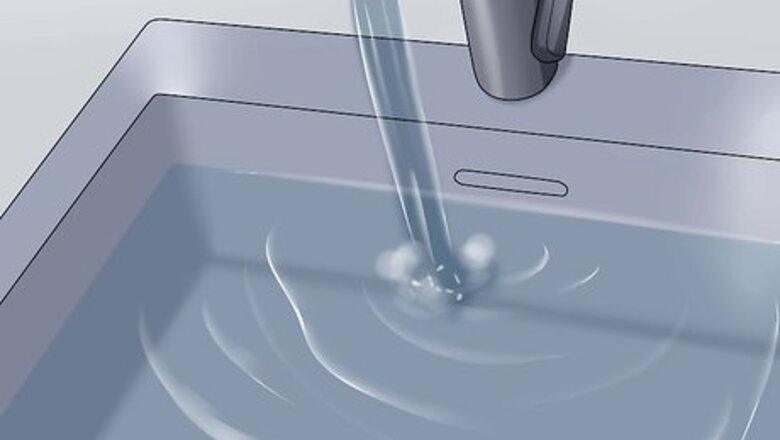
views
X
Expert Source
Brian StarrRat Specialist & Breeder
Expert Interview. 18 March 2021.
However, just like humans, some rats are better at cleaning themselves than others. And older or injured rats will definitely need more help. Keeping your rat’s home and environment clean will also go a long way to ensuring your rat stays clean.
Giving Your Rat a Bath

Fill the sink with an inch of warm water. The water temperature should be a comfortable warm temperature similar to what you would want in a bath — not too hot and not too cold. Since rats are fairly small, you only need to fill the sink with about an inch of water for the bath. Make sure the water stays warm throughout the bath. If the water starts to cool off too quickly, add some more warm water to the bath.
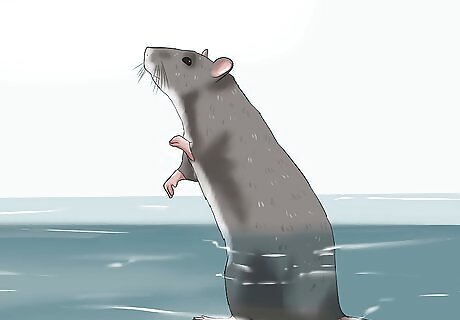
Place your rat inside the water and allow them to get comfortable. Just like other animals, some rats like baths and some do not. When you place your rat into the bath you’ll want to keep a good hold on them unless they love the water and are not trying to get out. Some rats may not like the loud sound of running water, but may calm down once you turn off the tap.
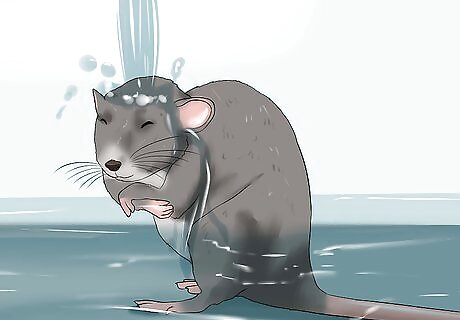
Pour water over your rat’s body and fur. Once your rat is comfortable in the water, hold them firmly with one hand to keep them steady. Use your other hand to scoop up the water and run it over your rat’s back, neck and belly. Avoid getting any water directly in their ears or eyes.
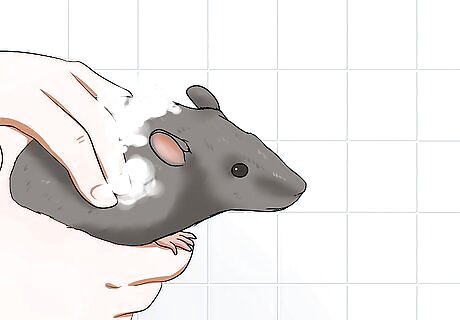
Shampoo your rat’s fur. Once your rat is sufficiently wet, squirt a small amount of shampoo on your rat's back. Use your free hand to scrub the shampoo across your rat’s back and belly. Use your nails to gently scrub the shampoo into their fur and remove any stains. You will want to use very gentle and natural shampoo on your rat. Shampoos designed for kittens and puppies will work as long as they do not contain any flea medications or other additional chemicals. One great option for shampoo is a gentle and natural baby shampoo, as it will have very limited ingredients in it. Another great option for shampoo is pure castile (vegetable-based) soap.
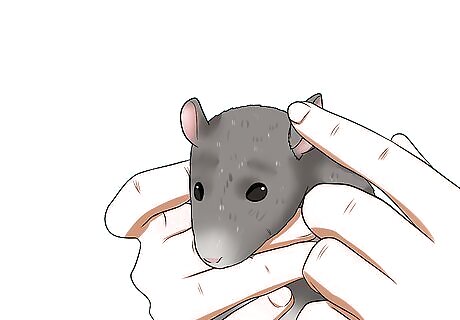
Wipe your rat’s face with your fingers. In order to avoid getting water and soap in your rat’s eyes and ears, use the tips of your fingers to wipe water around their face gently. This will help clean their nose and mouth.
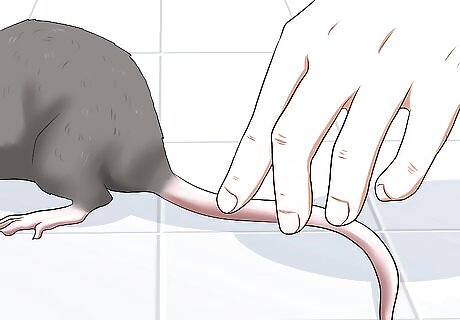
Clean your rat’s tail. Use your fingers to gently wipe your rat’s tail from base to tip. Go in the direction of the scales, not against them. Don’t scrub the tail, just wipe. Because your rat is always dragging its tail behind it, the tail can get dirty before the rest of your rat. If your rat doesn’t need a complete bath, you can just use a damp cloth to clean the tail.
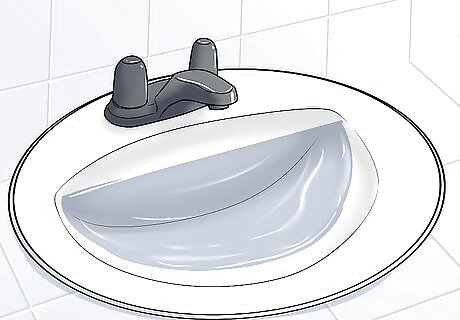
Replace the dirty bath water with clean, warm water. Once you’re finished shampooing your rat, empty the dirty water from the sink. Refill the sink with clean, warm water — the same temperature as before.
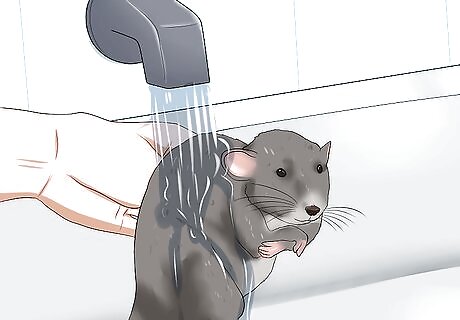
Rinse your rat off thoroughly in the clean water. Use the clean bath water to completely rinse all shampoo from your rat’s fur and skin. As an alternative, you can rinse off your rat using running water instead of refilling the sink — if your rat is comfortable with the loud noise.
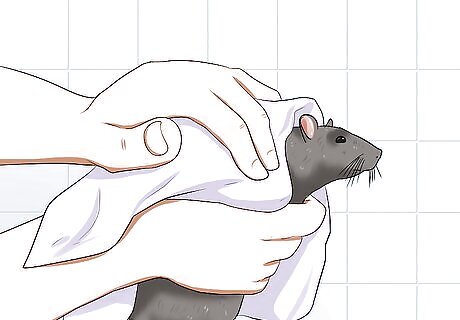
Dry off your rat in a clean towel. Wrap a clean towel completely around your rat. Gently massage your rat all over to remove any excess water and start the fur drying. You won’t need to get your rat completely dry before placing it back in its cage. Once your rat is fairly dry, it will finish the process on its own. If your rat isn’t scared of the noise, you can also use a blow dryer on a low heat setting to dry your rat. You might also consider brushing your rat’s fur while it is drying, if they enjoy the extra attention.
Massaging a Hairless Rat

Fill the sink with an inch of warm water. Put the stopper in your sink and fill it with comfortably warm water. You only need about an inch of water in the sink.
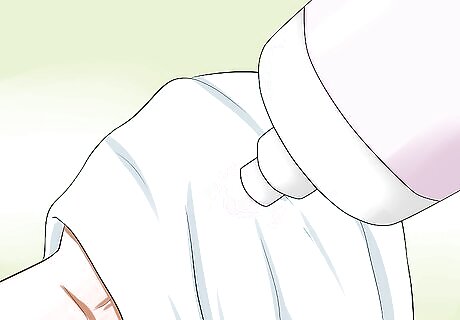
Squirt pure castile soap onto a washcloth and soak in the sink. Squirt a small amount of pure castile soap, of any fragrance, on a washcloth. Soak that washcloth in the warm water until it’s completely wet, then wring it out.
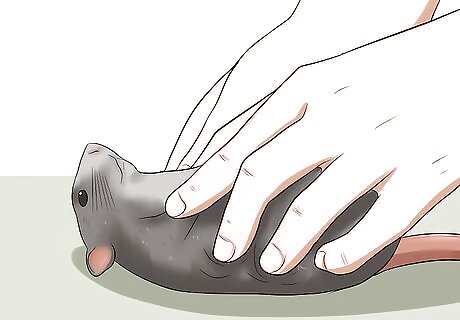
Massage your hairless rat. Unfold the washcloth and place it on your rat like a blanket. Hold your rat steady with one hand and use your other hand to gently massage your rat all over. Your hand should be on top of the washcloth while you massage your rat. Adjust the location of the washcloth to ensure you get your rat’s belly and legs.
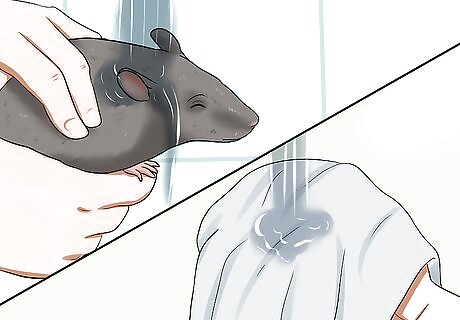
Rinse the washcloth and your rat. Rinse all the pure castile soap off the washcloth under warm water. Wring out the washcloth once it’s rinsed. Use the same process to massage your rat a second time with the rinsed washcloth.
Keeping Your Rat’s Home Clean
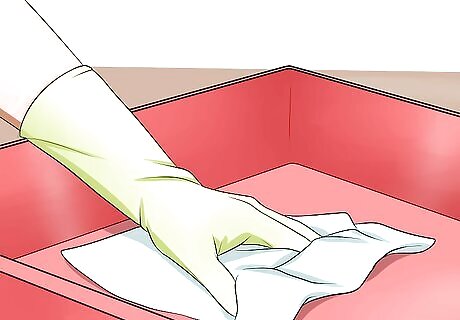
Wipe your rat’s cage on a daily basis. One of the worst smells a rat can generate is from urine that’s been left sitting somewhere too long (e.g. a blanket, bottom of the cage, etc.). In order to ensure this smell doesn’t start, wipe the surfaces of your rat’s cage on a daily basis (e.g. bars, floors, ramps, etc.). This daily cleaning can easily be done with baby wipes or even a damp cloth. Nothing fancy or in-depth is required.

Check your rat’s fabric items regularly. Most rat cages will contain several fabric-based items, like blankets and hammocks, for your rat to rest and relax. Inspect and smell your rat’s fabric items on a daily basis (or every two days) to make sure they still smell fresh. If they smell bad, or are starting to smell bad, replace them with clean items.
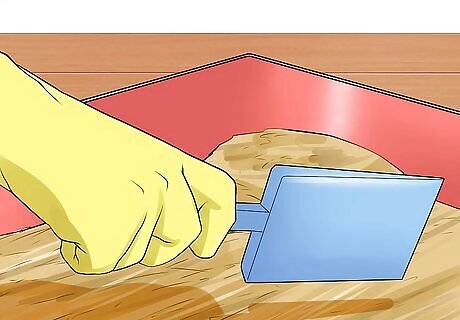
Replace your rat’s litter and bedding every day. Depending on how you have your rat’s cage setup, you may have both bedding (for the bottom of the cage) and litter (for the actual litter box). Spot clean soiled litter every day, and scoop out and replace bedding that's been soiled with urine and pellets. Daily cleaning will help reduce and eliminate bad odors. Depending on the type of litter and bedding you use, you can either sweep it out of the cage with a small broom and dust pan, or you can use a vacuum. Once the old bedding and litter have been removed from the cage, you should wipe the cage floor and litter box before putting in new litter and bedding.
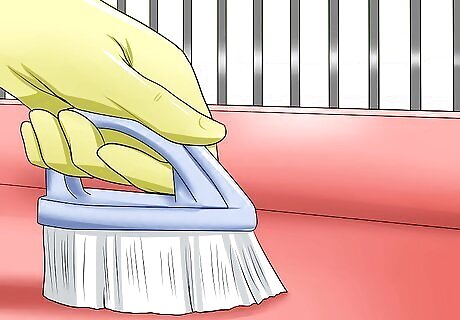
Clean the area around your rat’s cage regularly. Chances are your rat isn’t going to always keep their dirty litter and bedding and poop inside the cage. Therefore it is a good idea to wipe the areas around the outside of your rat’s cage regularly to remove stains and smells. One tip for cleaning the area around the outside of the cage is to use a mixture of water and vinegar and a clean cloth. Don’t forget to clean the outside surfaces of the cage, the floor under the cage, and the walls around the cage.
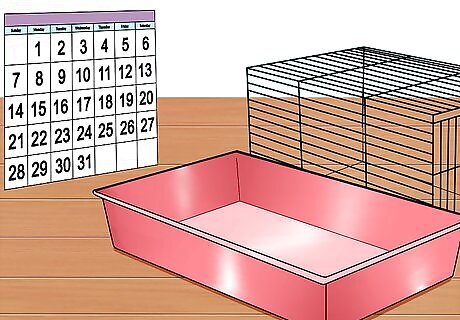
Disassemble and clean your rat’s cage on a monthly basis. At least once a month, completely take apart your rat’s cage and clean every square inch of it carefully. You may find it easier to do this monthly cleaning in your bathtub or laundry sink. This type of cleaning requires slightly more heavy duty cleaner, like diluted bleach. But if you use bleach, make sure the cage pieces are completely rinsed before putting your rat back inside.
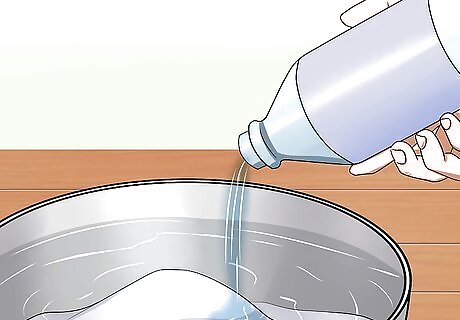
Soak non-fabric items in a bucket of diluted bleach monthly. While you have your rat’s cage in pieces to clean it, take any smaller plastic or metal pieces and soak them in a bucket of diluted bleach. This might include shelves or toys. Remember to completely rinse and dry these items off before putting them back in the cage.

Wash fabric items as required in the washing machine. Chances are you will have more than one of each fabric item you use (e.g. hammock, blanket, etc.) so you can replace these items and put the dirty ones aside until you have enough for a laundry load. Once you have a load, you can wash the items with pure castile soap, or with a gentle/mild laundry detergent. It probably doesn’t matter if you use the dryer or hang the items to air dry, just don’t use fabric softener or dryer sheets.




















Comments
0 comment